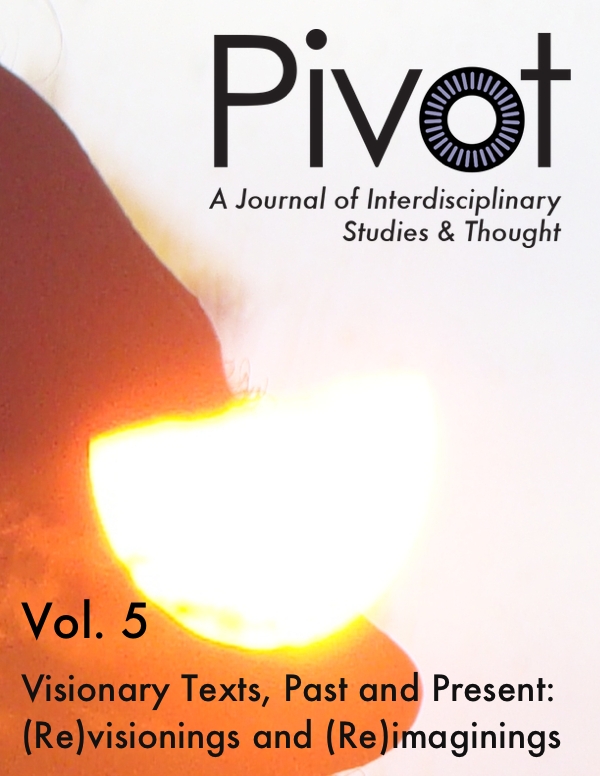Afro-Surreal and Afro-Futuristic Visual Technologies in Junot Díaz’s The Brief Wondrous Life of Oscar Wao and Colson Whitehead’s Zone One
DOI:
https://doi.org/10.25071/2369-7326.40261Abstract
The recent explosion of interest in black speculative fiction necessitates study of these new, innovative texts. Afro-Surrealism, a form of black speculative fiction that began in the 1920s (First Wave Afro-Surrealism) and gained popularity in the 1960s (Second Wave Afro-Surrealism), has entered a Third Wave, one that closely mirrors its aesthetic cousin Afro- Futurism in its incorporation of technology into various texts. Both Afro-Surrealism and Afro-Futurism have sparked an outpouring of visual art, music, books, websites, and films, but more importantly, these movements have reinvigorated the novel by incorporating film’s storytelling techniques (jump cuts, montages). These narrative changes, when coupled with the frequent references to film, reveal how some black writers are rethinking technology. For the Afro-Surrealist, borrowing from film’s visual technologies allows for a more meaningful retelling of history, while for the Afro-Futurist, cinematic writing represents people of color’s ability to work as technological innovators and creators. This paper positions Junot Díaz’s The Brief Wondrous Life of Oscar Wao as the representative Third Wave Afro-Surrealist text, and Colson Whitehead’s Zone One as the representative Afro-Futurist text.
References
Dery, Mark. Flame Wars: The Discourse of Cyberculture. Durham, NC: Duke UP, 1994. Print. https://doi.org/10.1215/9780822396765
Díaz, Junot. The Brief Wondrous Life of Oscar Wao. New York: Riverhead, 2007. Print.
Eisenstein, Sergei. Film Forum: Essays in Film Theory. Ed. Jay Leyda. Orlando: Harcourt Brace, 1977.
Eshun, Kodwo. "Further Considerations in Afro-Futurism." The New Centennial Review 3.2 (2003): 287-302. Web. https://doi.org/10.1353/ncr.2003.0021
Kelly, James Patrick, and John Kessel, eds. The Secret History of Science Fiction. San Francisco: Tachyon, 2009. Print.
Lavender, Isiah. Race in American Science Fiction. Bloomington: Indiana UP, 2011. Print.
Mulvey, Laura. "Visual Pleasure and Narrative Cinema." Visual and Other Pleasures. London: Palgrave Macmillan, 1989. Print. 14-26. https://doi.org/10.1007/978-1-349-19798-9_3
Reynaud, Bérénice. "Agnès Varda, Cine-Writer." Walker Dialogue and Retrospective Series. Walker Art, Feb. 2001. Web.
Todorov, Tzvetan. The Fantastic: A Structural Approach to a Literary Genre. Ithaca: Cornell UP, 1975.
Womack, Ytasha. Afrofuturism. Chicago: Lawrence Hill, 2013. Print.
Whitehead, Colson. Zone One. New York: Random House, 2011.


